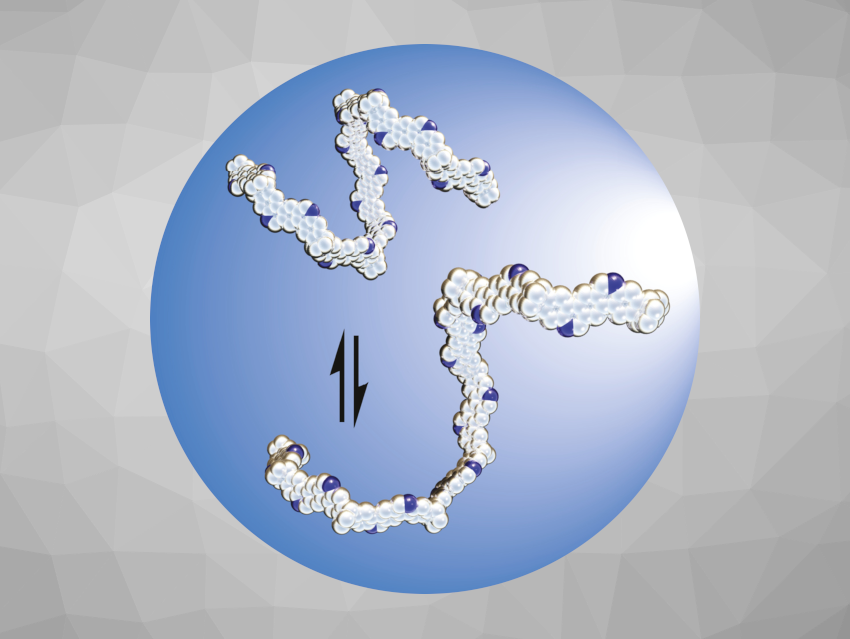In this issue, D. Konkolewicz et al. review adaptable timescales for dynamic bonds in responsive materials. The Minireviews deal with activatable multimodal probes for in vivo imaging and theranostics (D. Ye et al.), X-ray absorption spectroscopy as a probe for the active states of earth-abundant electrocatalysts for the oxygen evolution reaction (D. Antipin et al.), sustainable Wacker-type oxidations (R. Gramage-Doria et al.), as well as nucleic-acid-based electrochemical biosensors for clinical applications (L. Soleymani et al.). H. Tüysüz et al. share a Viewpoint about critical chemical processes for a sustainable future that pose challenges for industry and the Max Planck–Cardiff Centre on the Fundamentals of Heterogeneous Catalysis (FUNCAT).
In the original research section, S. T. Schneebeli et al. present helical molecular springs with varying spring constants (see picture). C. Merten et al. succeeded in the structure elucidation of in-situ-generated chiral hypervalent iodine complexes by vibrational circular dichroism spectroscopy. L. Chu et al. developed a light-induced divergent cyanation of alkynes that is enabled by phosphorus radicals, and Q. Peng et al. synthesized wide band gap polymer donors functionalized with carbamate side chains for polymer solar cells.
- Angewandte Chemie 50/2022: Sustainable Reactions,
Angew. Chem. Int. Ed. 2022, 61 (50).


